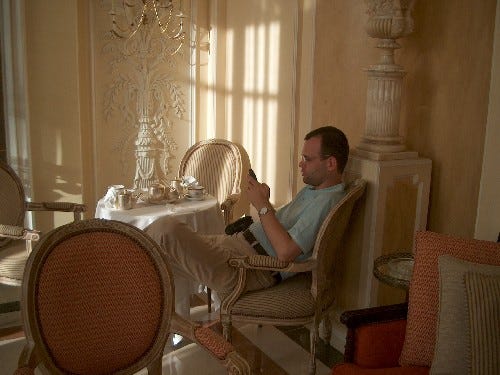
When I came to Sydney for a two-month leadership program in 2016, I have been impressed how open most professionals were towards strangers. It was quite common to allow a third person in a conversation and make them feel included.
Unheard of that in my European past, especially as an erotic foreigner.
Observing this Aussie behaviour, I adopted that approach quickly and started to introduce people with each other - without a hidden agenda except being happy that people can meet and learn from each other.
20 years ago it was the mobile phone that combined people as it became possible to connect on the fly. Back then we used SMS as the only form of text messages, and it was not popular across the population, rather with younger people.
Back then we would spend more time and add more effort in a proper connection, save names and numbers into our phones and then wonder how to export the data to the next generation of phones.
Fast forward to today, it is quite difficult to remember person by person where we met, what we talked about and - even more important - which channel that person preferred. Did we chat via Facebook Messenger, WhatsUp, LinkedIn, X (formerly Twitter)? In some regions like in Asia it is normal to use WhatsUp, Viber and WeChat even for serious business conversations. Others prefer Telegram or Signal.
In any case, a proper connection should last longer than the moment of meeting a person for the first time.
We collect business years for decades and hide them in the locker. But for electronic tools we don’t have to apply the same “collect & forget” approach.
Therefore I am a big fan of sending a personalised message during the time of building the initial connections. Some platforms encourage that (e.g. LinkedIn on desktop, possible on mobile as well), for others it is rather a voluntary form of courtesy and respect to add some individual lines afterwards.
I see two tricky challenges along the way:
First we want to build different groups of people, e.g. an inner circle, an outer circle and everyone else. Some platforms such as Instagram allow one inner level, others offer that only with a higher subscription (e.g. LinkedIn Sales Navigator). An extended approach is creating groups and bringing others together (e.g. Facebook groups).
The second challenge is remembering who we met. My secret here is planting future searches in the individual invitation message. LinkedIn messaging is the most underrated search engine: adding two hooks into a personalised invite indicating where we met and what we talked about can help to find a person when we planted those hooks in a way I will find that again.
Once we know how to categorise our people and remember who it was using a personalised invite, we can manage our network pretty well.
And then we are doing what Nokia said back then: connecting people. Beyond the verb, it is also a form of being as connecting people.
How do you properly connect with others?



